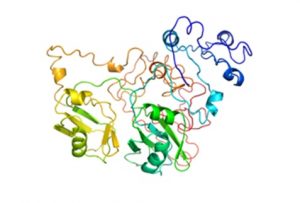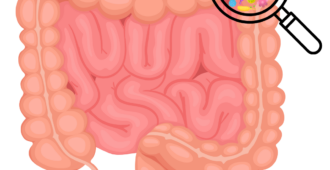Yesterday we published an introductory blog on frontotemporal dementia (FTD) and described how it is sometimes found in combination with MND.
Today we are looking at a biomedical project on FTD and MND that we are funding.
The project
Dr Olaf Ansorge and Professor Kevin Talbot of Oxford University are leading a biomedical project aimed at identifying cell changes in the brain tissues of people who had MND, FTD, or developed both conditions (FTD-MND).
The aim of their research project is to identify which nerve cells within the brain are most likely to be affected by faulty proteins known to contribute to both FTD and MND. Knowing which brain cells are affected, and by which proteins, will help explain the genetic differences between the two conditions.
How can you tell if nerve cells in the brain are affected?
By studying post-mortem brain tissue down a microscope, the researchers will be looking at the typical signs that show if brain cells are affected and how this relates to genetic changes.
There are different types of cell in the brain: neurons – which carry chemical messages/instructions, and three types of glial cells – these support the neurons, and help with grow and repair. It is possible that these different nerve cells are affected in different ways by certain proteins.
There are three signs something is going wrong inside the cell: tangled TDP-43 proteins, tiny fragments of the C9orf72 protein, or clumps of C9orf72 RNA.

You can see if any of these are present by firstly marking or staining the cell with a chemical dye to make any proteins present show up, and then looking at it through a high powered microscope.
Prof Talbot, Dr Ansorge and their colleagues will be using brain tissue that has been donated to the Oxford Brain Bank.
At the moment it is still not clear exactly how the tangle of proteins (or protein fragments) interact with nerve cells and contribute to the neurons not working and MND developing.
The genetics behind FTD and MND-FTD
We already know that the C9orf72 gene plays a part in familial MND – when the gene does not work as it should (has a mutation) it produces a protein which is thought to interfere with motor neurons.
Having a faulty C9orf72 gene has also been discovered to contribute towards inherited FTD.
It is unknown why some people who have the C9orf72 mutation develop MND only, develop FTD only, or develop both conditions (FTD-MND).
FTD is also thought to be caused by protein deposits or clumps of TDP-43, tau or FUS proteins in nerve cells in the brain.
Like MND, FTD is a complex disease. The presence of a specific (faulty) version of one of the genes or proteins mentioned above can only give a clue that the disease may develop at some point in a person’s lifetime.
The faulty gene or protein is unlikely to be sufficient on its own to cause either disease, and therefore other factors must be at play, such as environmental factors and as of yet unknown genetic factors.
What will be gained from this study?

Explaining why this research is important, Dr Ansorge said: “Understanding why some cells are affected and not others is crucial for developing therapies in order to protect these cells, and possibly stop FTD developing”.
Knowing and understanding what is going wrong in nerve cells within the brain will also help in learning more about FTD and FTD-MND and identifying specific areas of further research into these conditions.
In the long-term it may help improve the delivery and targeting of treatments developed to slow the progression of FTD-MND and FTD.





